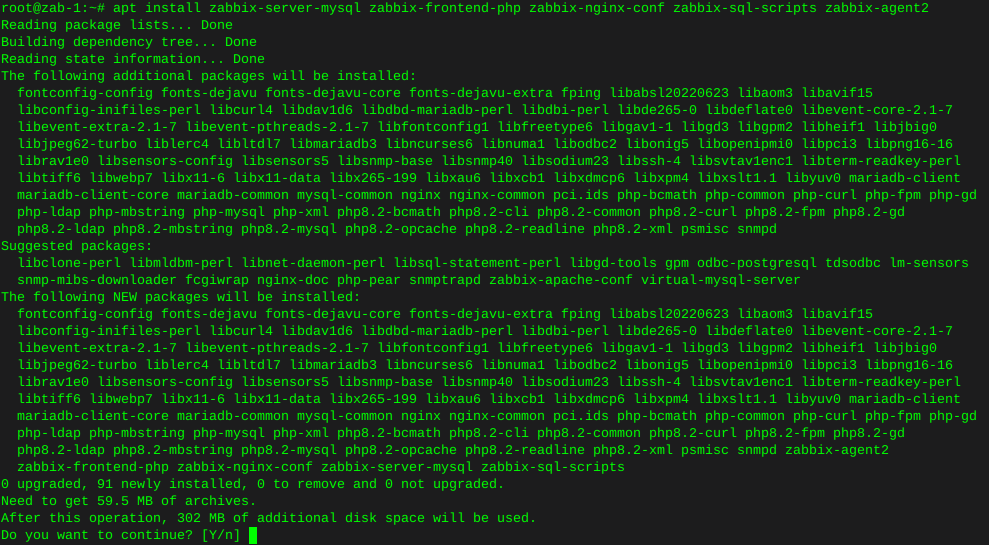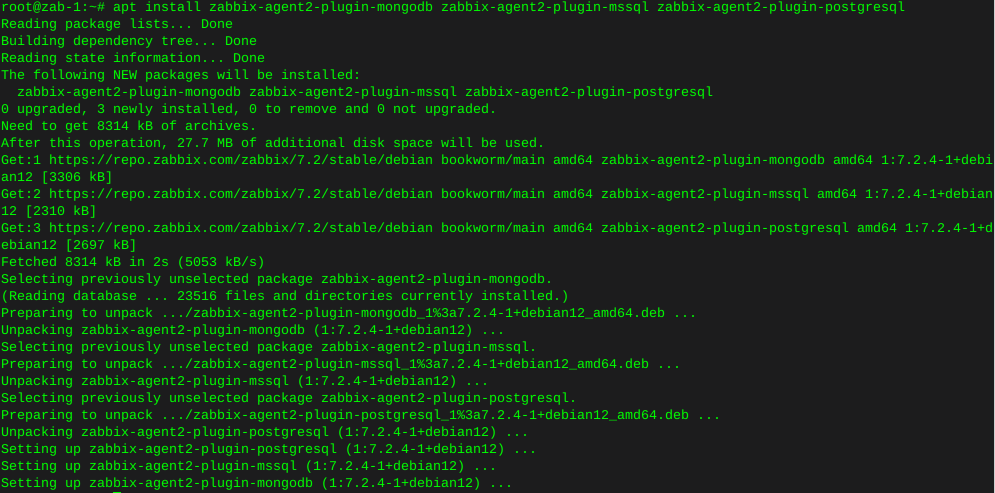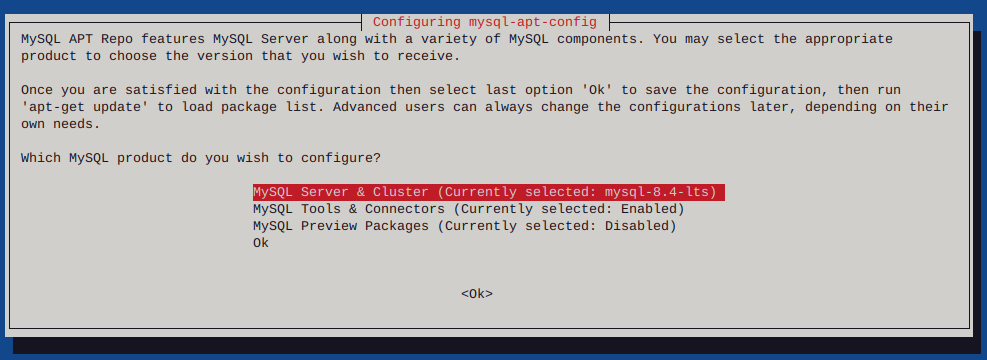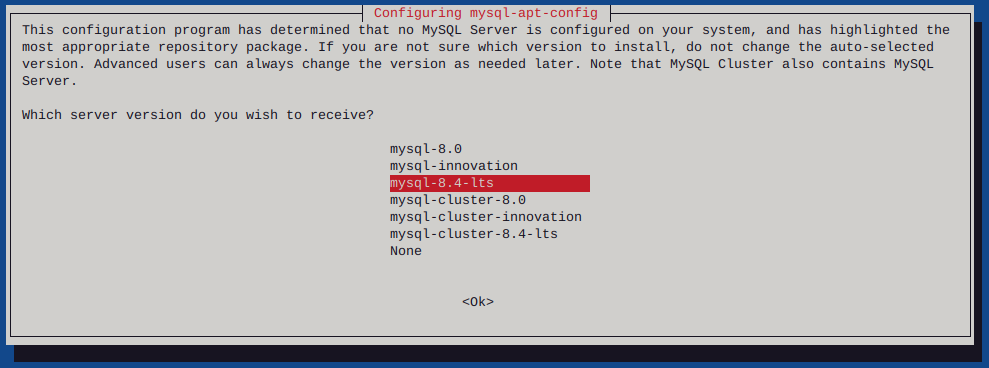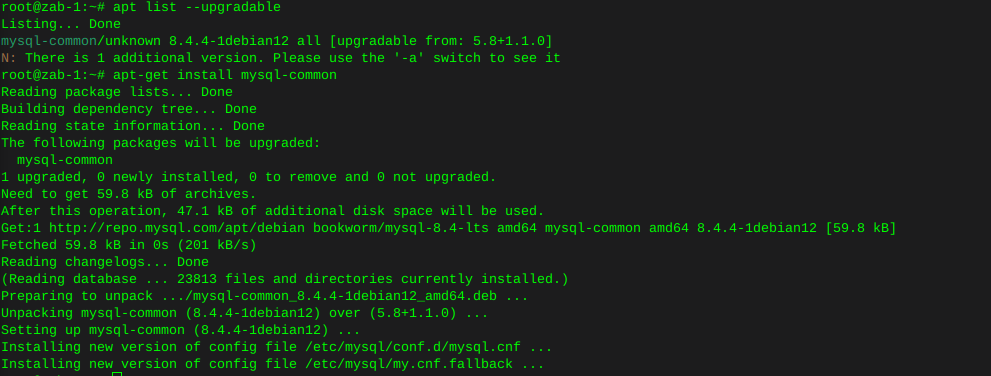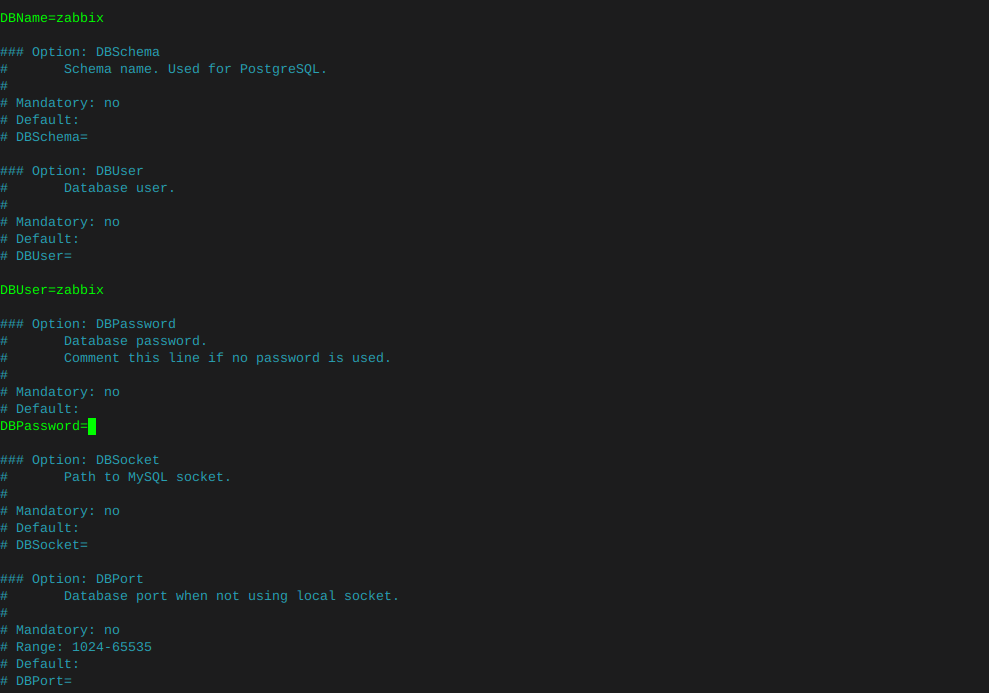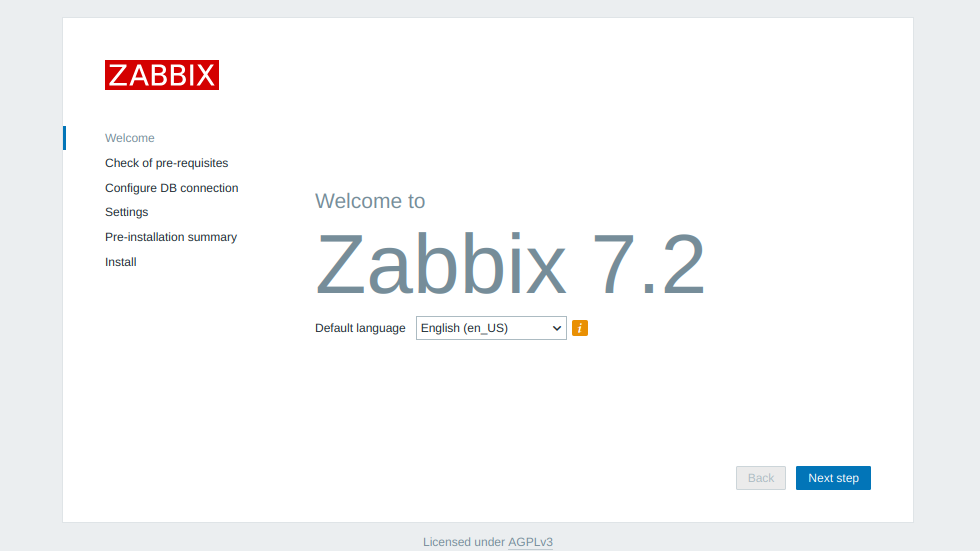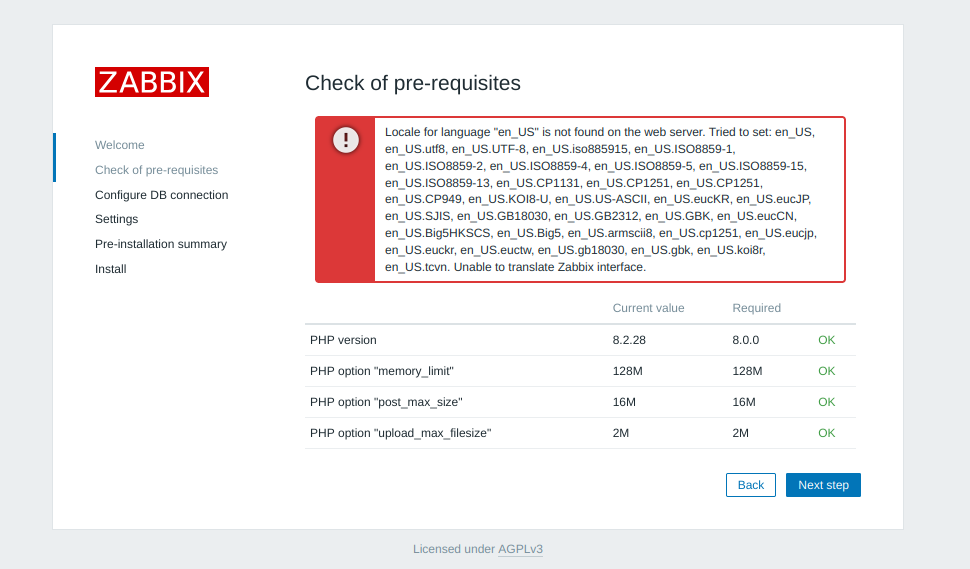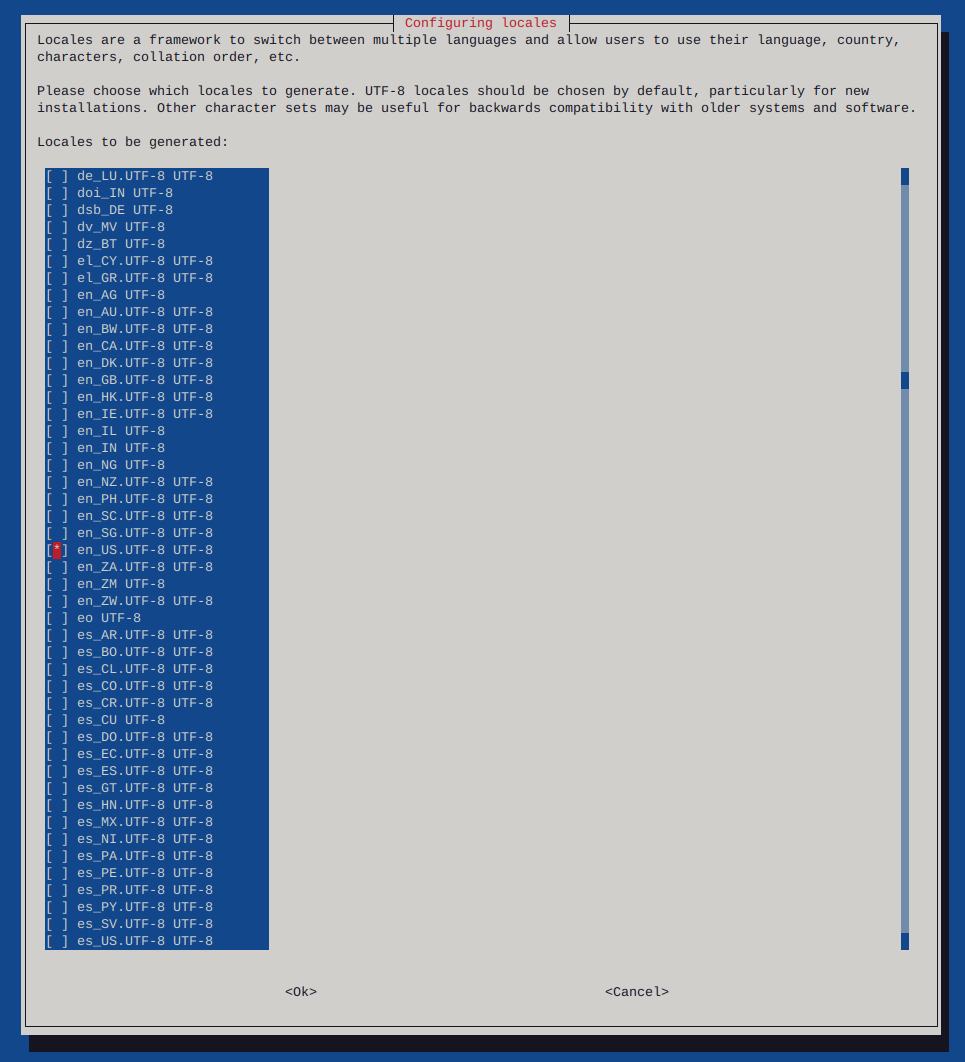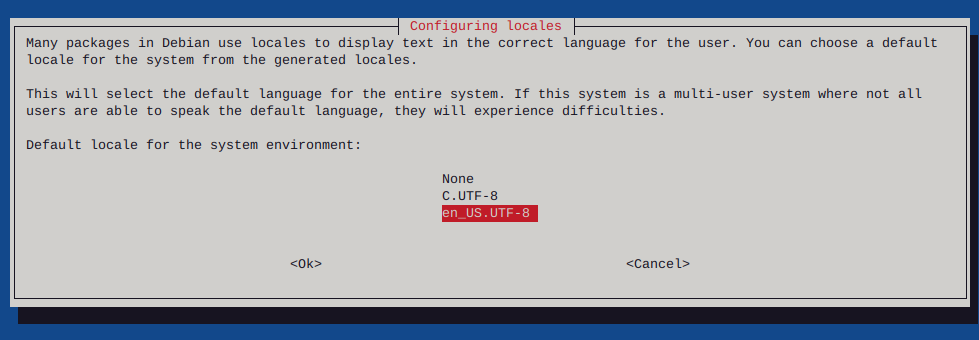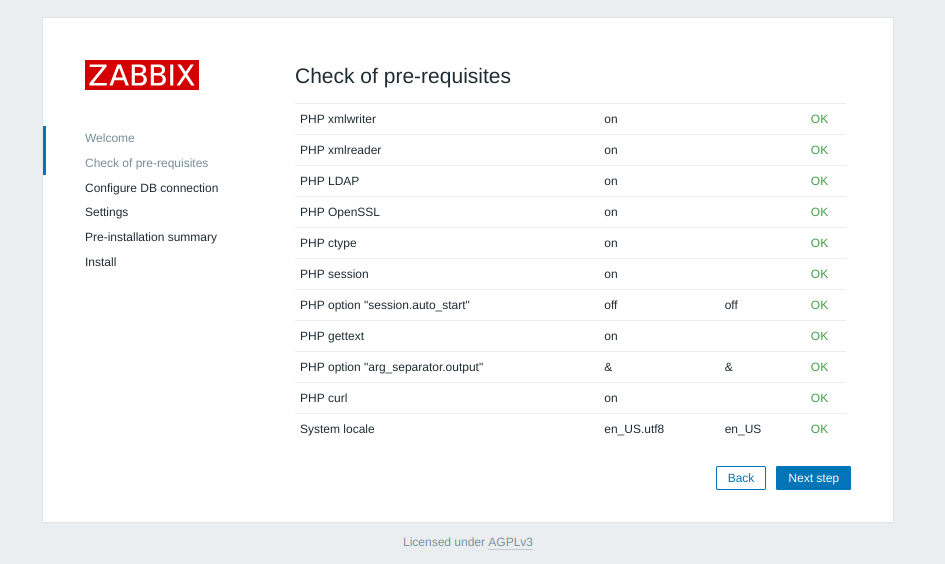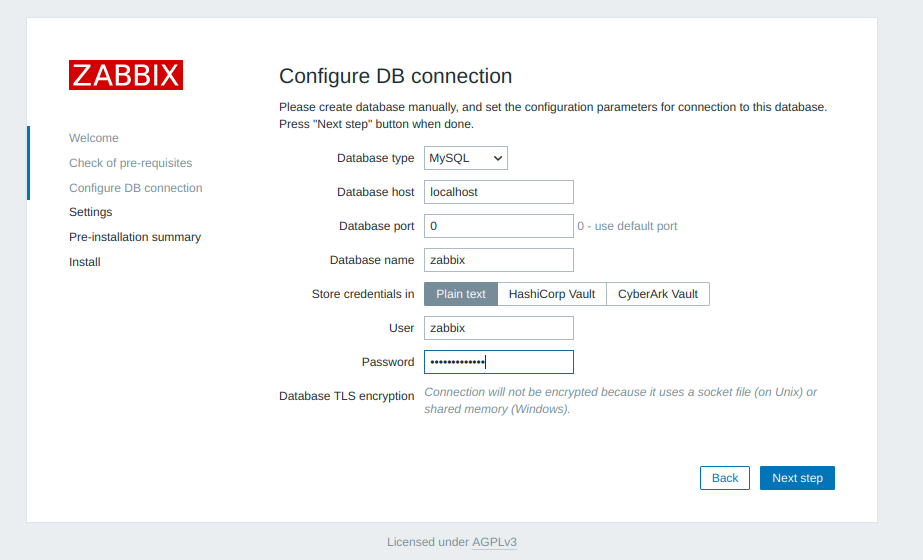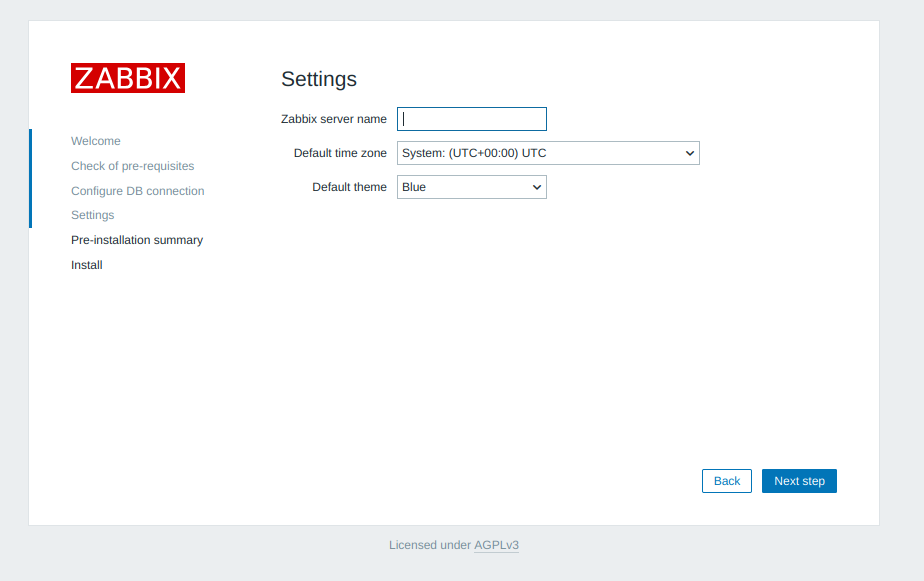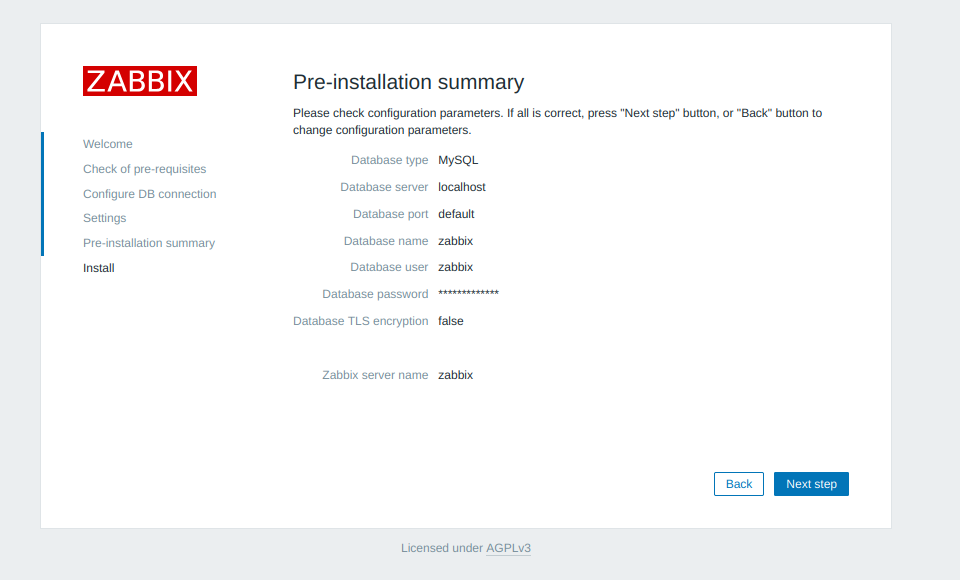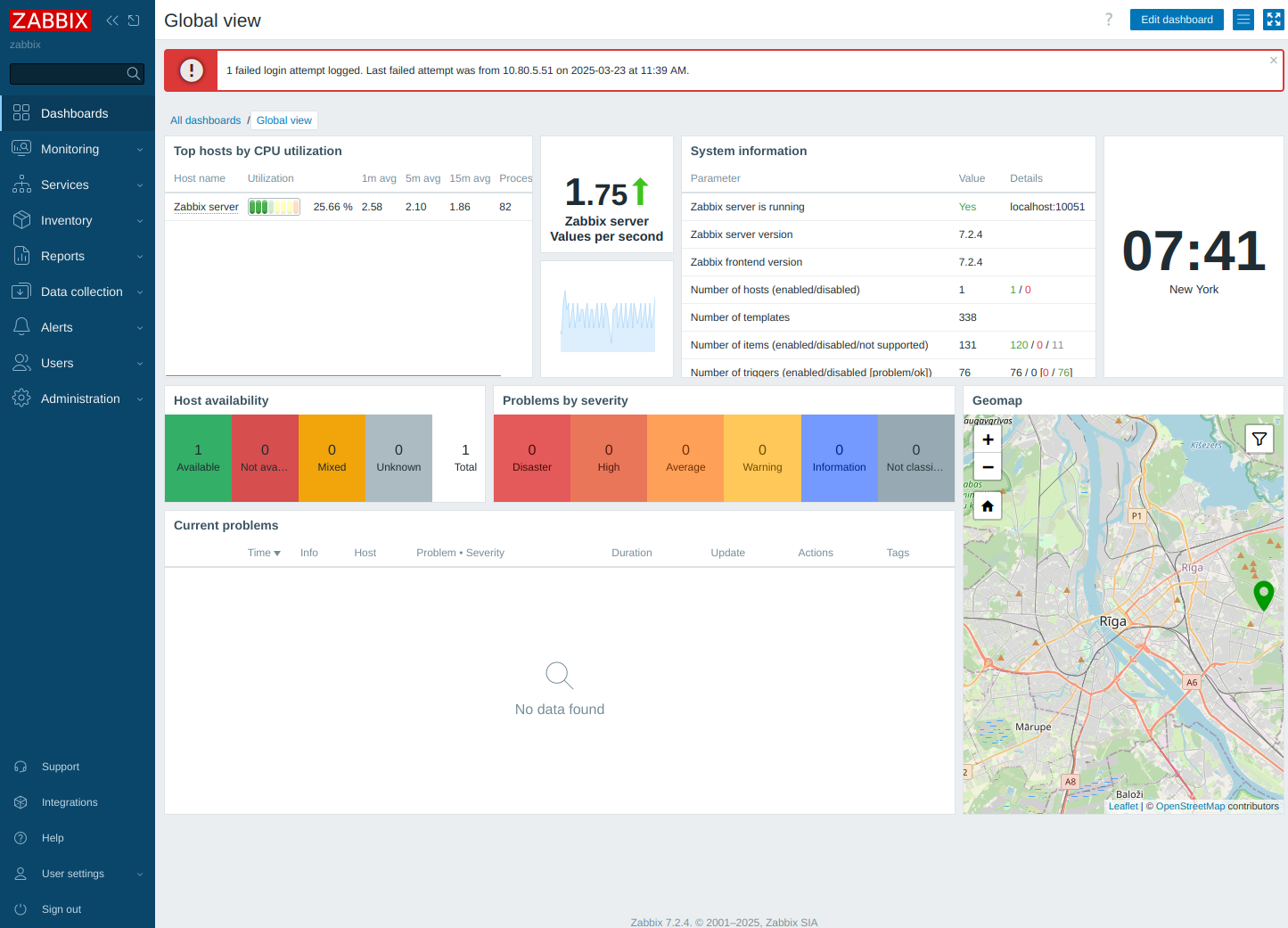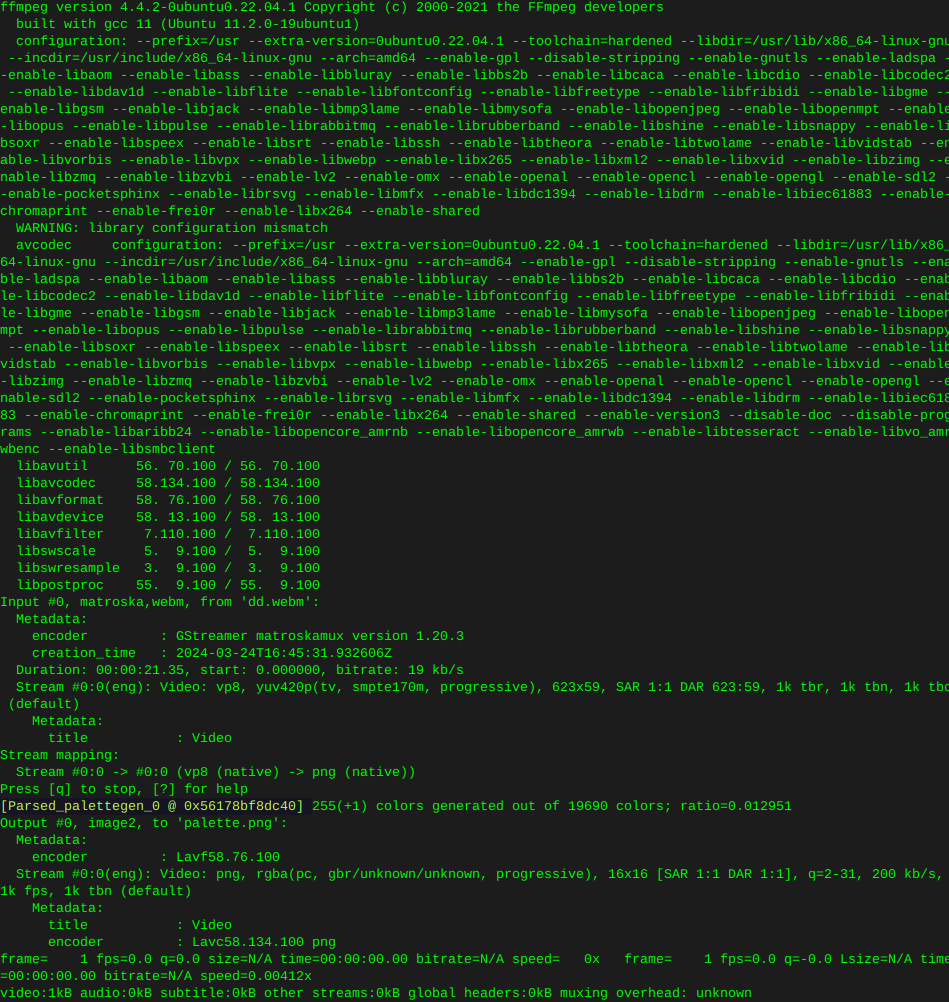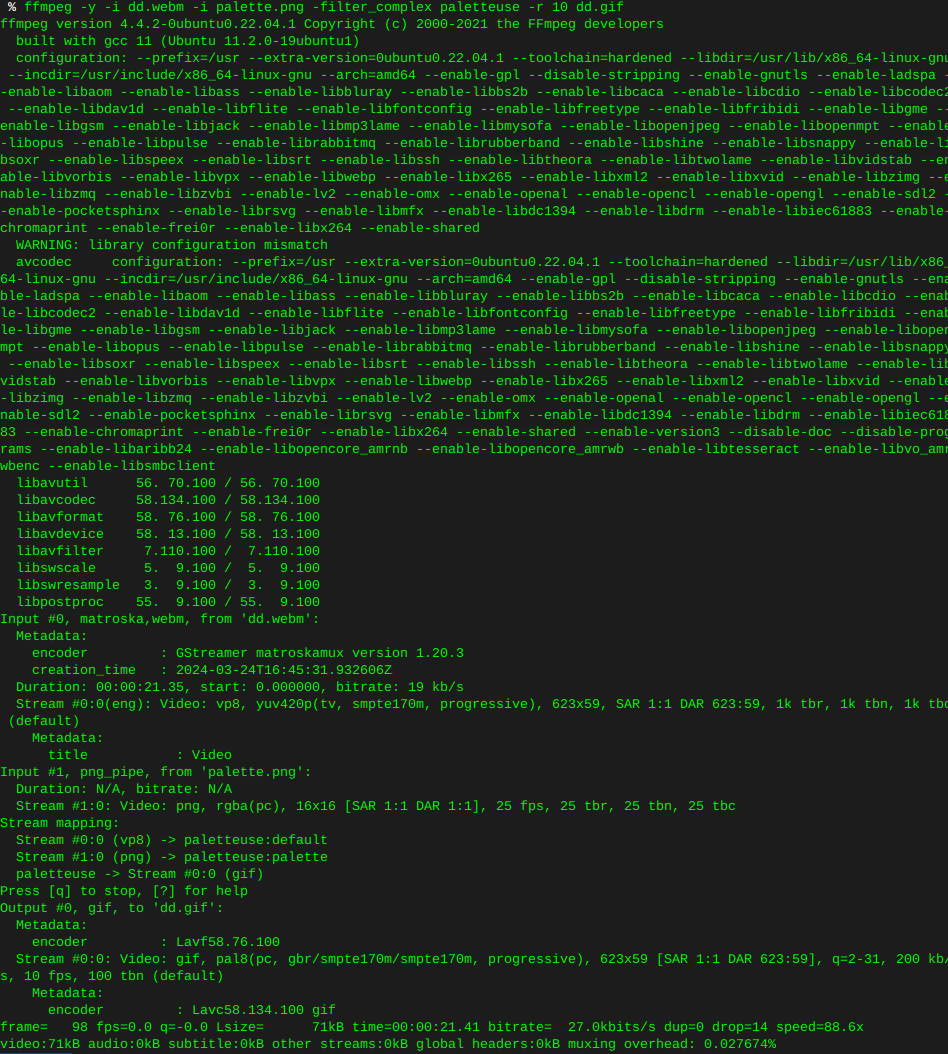Systemd commands
-
systemctlLists all loaded units or:systemctl list-unitssystemctl --failedList failedsystemctl statusPrint status from all unitsTo list all units on the machine, loaded or not:
systemctl list-unit-files
“A unit configuration file encodes information about a service, a socket, a device, a mount point, an automount point, a swap file or partition, a start-up target, a watched file system path, a timer controlled and supervised by systemd(1), a resource management slice or a group of externally created processes.”
systemd [unit]systemctl enable [unit]systemctl disable [unit]systemctl start [unit]systemctl stop [unit]systemctl mask [unit]systemctl unmask [unit]systemctl restart [unit]systemctl reload [unit]systemctl reset-failed [unit]
Change unit definitions
systemctl edit [unit]systemctl daemon-reloadReload after modifying/adding configs [units]Global definitions from /lib/systemd/system will then be overruled by the new file in /etc/systemd/system
Listing Processes / Containers
To help identify cgroup/process relations run
ps xawf -eo pid,user,cgroup,args
Performance
Print startup time per service
systemd-analyze blame
Logging
journalctlPrint all log entriesjournalctl -bPrint everything since bootjournalctl -u [unit]Print for unit onlyjournalctl --no-pagerNon-interactive modejournalctl --vacuum-size=50MRemove logs until less than 50MB is used ; good for those run away log timesjournalctl --vacuum-time=1weekRemove logs older than one week
Misc systemd commands
systemctl statussystemctl is-enabled [unit]systemctl is-failed [unit]Example:
systemctl is-enabled nginx.serviceWill print something to this effect:
nginx.service - A high performance web server and a reverse proxy server Loaded: loaded (/lib/systemd/system/nginx.service; enabled) Active: active (running) since Sun 2016-01-03 14:18:21 EST; 1 day 21h ago Main PID: 312 (nginx) CGroup: /system.slice/nginx.service ├─312 nginx: master process /usr/sbin/nginx -g daemon master_process on; ├─315 nginx: worker process ├─316 nginx: worker process ├─317 nginx: worker process └─319 nginx: worker process
Printing unit dependencies
systemctl list-dependencies nginx.service
The latter Rely on dbus being installed
apt-get update && apt-get install -y dbushostnamectltimedatectllocalectlloginctlsystemd-detect-virt -
man systemctlName
systemctl — Control the systemd system and service manager Synopsis
systemctl [OPTIONS…] COMMAND [NAME…] Description
systemctl may be used to introspect and control the state of the “systemd” system and service manager. Please refer to systemd(1) for an introduction into the basic concepts and functionality this tool manages. Options
The following options are understood:
-t, --type=
The argument should be a comma-separated list of unit types such as service and socket. If one of the arguments is a unit type, when listing units, limit display to certain unit types. Otherwise, units of all types will be shown. As a special case, if one of the arguments is help, a list of allowed values will be printed and the program will exit.–state=
The argument should be a comma-separated list of unit LOAD, SUB, or ACTIVE states. When listing units, show only those in the specified states. Use --state=failed to show only failed units. As a special case, if one of the arguments is help, a list of allowed values will be printed and the program will exit.-p, --property=
When showing unit/job/manager properties with the show command, limit display to properties specified in the argument. The argument should be a comma-separated list of property names, such as "MainPID". Unless specified, all known properties are shown. If specified more than once, all properties with the specified names are shown. Shell completion is implemented for property names. For the manager itself, systemctl show will show all available properties. Those properties are documented in systemd-system.conf(5). Properties for units vary by unit type, so showing any unit (even a non-existent one) is a way to list properties pertaining to this type. Similarly, showing any job will list properties pertaining to all jobs. Properties for units are documented in systemd.unit(5), and the pages for individual unit types systemd.service(5), systemd.socket(5), etc.-a, --all
When listing units, show all loaded units, regardless of their state, including inactive units. When showing unit/job/manager properties, show all properties regardless whether they are set or not. To list all units installed on the system, use the list-unit-files command instead.-r, --recursive
When listing units, also show units of local containers. Units of local containers will be prefixed with the container name, separated by a single colon character (":").–reverse
Show reverse dependencies between units with list-dependencies, i.e. follow dependencies of type WantedBy=, RequiredBy=, PartOf=, BoundBy=, instead of Wants= and similar.–after
With list-dependencies, show the units that are ordered before the specified unit. In other words, recursively list units following the After= dependency. Note that any After= dependency is automatically mirrored to create a Before= dependency. Temporal dependencies may be specified explicitly, but are also created implicitly for units which are WantedBy= targets (see systemd.target(5)), and as a result of other directives (for example RequiresMountsFor=). Both explicitly and implicitly introduced dependencies are shown with list-dependencies.–before
With list-dependencies, show the units that are ordered after the specified unit. In other words, recursively list units following the Before= dependency.-l, --full
Do not ellipsize unit names, process tree entries, journal output, or truncate unit descriptions in the output of status, list-units, list-jobs, and list-timers.–show-types
When showing sockets, show the type of the socket.–job-mode=
When queuing a new job, this option controls how to deal with already queued jobs. It takes one of "fail", "replace", "replace-irreversibly", "isolate", "ignore-dependencies", "ignore-requirements" or "flush". Defaults to "replace", except when the isolate command is used which implies the "isolate" job mode. If "fail" is specified and a requested operation conflicts with a pending job (more specifically: causes an already pending start job to be reversed into a stop job or vice versa), cause the operation to fail. If "replace" (the default) is specified, any conflicting pending job will be replaced, as necessary. If "replace-irreversibly" is specified, operate like "replace", but also mark the new jobs as irreversible. This prevents future conflicting transactions from replacing these jobs (or even being enqueued while the irreversible jobs are still pending). Irreversible jobs can still be cancelled using the cancel command. "isolate" is only valid for start operations and causes all other units to be stopped when the specified unit is started. This mode is always used when the isolate command is used. "flush" will cause all queued jobs to be canceled when the new job is enqueued. If "ignore-dependencies" is specified, then all unit dependencies are ignored for this new job and the operation is executed immediately. If passed, no required units of the unit passed will be pulled in, and no ordering dependencies will be honored. This is mostly a debugging and rescue tool for the administrator and should not be used by applications. "ignore-requirements" is similar to "ignore-dependencies", but only causes the requirement dependencies to be ignored, the ordering dependencies will still be honoured.–fail
Shorthand for --job-mode=fail. When used with the kill command, if no units were killed, the operation results in an error.-i, --ignore-inhibitors
When system shutdown or a sleep state is requested, ignore inhibitor locks. Applications can establish inhibitor locks to avoid that certain important operations (such as CD burning or suchlike) are interrupted by system shutdown or a sleep state. Any user may take these locks and privileged users may override these locks. If any locks are taken, shutdown and sleep state requests will normally fail (regardless of whether privileged or not) and a list of active locks is printed. However, if --ignore-inhibitors is specified, the locks are ignored and not printed, and the operation attempted anyway, possibly requiring additional privileges.-q, --quiet
Suppress printing of the results of various commands and also the hints about truncated log lines. This does not suppress output of commands for which the printed output is the only result (like show). Errors are always printed.–no-block
Do not synchronously wait for the requested operation to finish. If this is not specified, the job will be verified, enqueued and systemctl will wait until the unit's start-up is completed. By passing this argument, it is only verified and enqueued.–user
Talk to the service manager of the calling user, rather than the service manager of the system.–system
Talk to the service manager of the system. This is the implied default.–no-wall
Do not send wall message before halt, power-off, reboot.–global
When used with enable and disable, operate on the global user configuration directory, thus enabling or disabling a unit file globally for all future logins of all users.–no-reload
When used with enable and disable, do not implicitly reload daemon configuration after executing the changes.–no-ask-password
When used with start and related commands, disables asking for passwords. Background services may require input of a password or passphrase string, for example to unlock system hard disks or cryptographic certificates. Unless this option is specified and the command is invoked from a terminal, systemctl will query the user on the terminal for the necessary secrets. Use this option to switch this behavior off. In this case, the password must be supplied by some other means (for example graphical password agents) or the service might fail. This also disables querying the user for authentication for privileged operations.–kill-who=
When used with kill, choose which processes to send a signal to. Must be one of main, control or all to select whether to kill only the main process, the control process or all processes of the unit. The main process of the unit is the one that defines the life-time of it. A control process of a unit is one that is invoked by the manager to induce state changes of it. For example, all processes started due to the ExecStartPre=, ExecStop= or ExecReload= settings of service units are control processes. Note that there is only one control process per unit at a time, as only one state change is executed at a time. For services of type Type=forking, the initial process started by the manager for ExecStart= is a control process, while the process ultimately forked off by that one is then considered the main process of the unit (if it can be determined). This is different for service units of other types, where the process forked off by the manager for ExecStart= is always the main process itself. A service unit consists of zero or one main process, zero or one control process plus any number of additional processes. Not all unit types manage processes of these types however. For example, for mount units, control processes are defined (which are the invocations of /usr/bin/mount and /usr/bin/umount), but no main process is defined. If omitted, defaults to all.-s, --signal=
When used with kill, choose which signal to send to selected processes. Must be one of the well-known signal specifiers such as SIGTERM, SIGINT or SIGSTOP. If omitted, defaults to SIGTERM.-f, --force
When used with enable, overwrite any existing conflicting symlinks. When used with halt, poweroff, reboot or kexec, execute the selected operation without shutting down all units. However, all processes will be killed forcibly and all file systems are unmounted or remounted read-only. This is hence a drastic but relatively safe option to request an immediate reboot. If --force is specified twice for these operations, they will be executed immediately without terminating any processes or unmounting any file systems. Warning: specifying --force twice with any of these operations might result in data loss.–message=
When used with halt, poweroff, reboot or kexec, set a short message explaining the reason for the operation. The message will be logged together with the default shutdown message.–now
When used with enable, the units will also be started. When used with disable or mask, the units will also be stopped. The start or stop operation is only carried out when the respective enable or disable operation has been successful.–root=
When used with enable/disable/is-enabled (and related commands), use an alternate root path when looking for unit files.–runtime
When used with enable, disable, edit, (and related commands), make changes only temporarily, so that they are lost on the next reboot. This will have the effect that changes are not made in subdirectories of /etc but in /run, with identical immediate effects, however, since the latter is lost on reboot, the changes are lost too. Similarly, when used with set-property, make changes only temporarily, so that they are lost on the next reboot.–preset-mode=
Takes one of "full" (the default), "enable-only", "disable-only". When used with the preset or preset-all commands, controls whether units shall be disabled and enabled according to the preset rules, or only enabled, or only disabled.-n, --lines=
When used with status, controls the number of journal lines to show, counting from the most recent ones. Takes a positive integer argument. Defaults to 10.-o, --output=
When used with status, controls the formatting of the journal entries that are shown. For the available choices, see journalctl(1). Defaults to "short".–firmware-setup
When used with the reboot command, indicate to the system's firmware to boot into setup mode. Note that this is currently only supported on some EFI systems and only if the system was booted in EFI mode.–plain
When used with list-dependencies, list-units or list-machines, the the output is printed as a list instead of a tree, and the bullet circles are omitted.-H, --host=
Execute the operation remotely. Specify a hostname, or a username and hostname separated by "@", to connect to. The hostname may optionally be suffixed by a container name, separated by ":", which connects directly to a specific container on the specified host. This will use SSH to talk to the remote machine manager instance. Container names may be enumerated with machinectl -H HOST.-M, --machine=
Execute operation on a local container. Specify a container name to connect to.–no-pager
Do not pipe output into a pager.–no-legend
Do not print the legend, i.e. column headers and the footer with hints.-h, --help
Print a short help text and exit.–version
Print a short version string and exit.Commands
The following commands are understood: Unit Commands
list-units [PATTERN…]
List known units (subject to limitations specified with -t). If one or more PATTERNs are specified, only units matching one of them are shown. This is the default command.list-sockets [PATTERN…]
List socket units ordered by listening address. If one or more PATTERNs are specified, only socket units matching one of them are shown. Produces output similar to LISTEN UNIT ACTIVATES /dev/initctl systemd-initctl.socket systemd-initctl.service ... [::]:22 sshd.socket sshd.service kobject-uevent 1 systemd-udevd-kernel.socket systemd-udevd.service 5 sockets listed. Note: because the addresses might contains spaces, this output is not suitable for programmatic consumption. See also the options --show-types, --all, and --state=.list-timers [PATTERN…]
List timer units ordered by the time they elapse next. If one or more PATTERNs are specified, only units matching one of them are shown. See also the options --all and --state=.start PATTERN…
Start (activate) one or more units specified on the command line. Note that glob patterns operate on a list of currently loaded units. Units which are not active and are not in a failed state usually are not loaded, and would not be matched by any pattern. In addition, in case of instantiated units, systemd is often unaware of the instance name until the instance has been started. Therefore, using glob patterns with start has limited usefulness.stop PATTERN…
Stop (deactivate) one or more units specified on the command line.reload PATTERN…
Asks all units listed on the command line to reload their configuration. Note that this will reload the service-specific configuration, not the unit configuration file of systemd. If you want systemd to reload the configuration file of a unit, use the daemon-reload command. In other words: for the example case of Apache, this will reload Apache's httpd.conf in the web server, not the apache.service systemd unit file. This command should not be confused with the daemon-reload command.restart PATTERN…
Restart one or more units specified on the command line. If the units are not running yet, they will be started.try-restart PATTERN…
Restart one or more units specified on the command line if the units are running. This does nothing if units are not running. Note that, for compatibility with Red Hat init scripts, condrestart is equivalent to this command.reload-or-restart PATTERN…
Reload one or more units if they support it. If not, restart them instead. If the units are not running yet, they will be started.reload-or-try-restart PATTERN…
Reload one or more units if they support it. If not, restart them instead. This does nothing if the units are not running. Note that, for compatibility with SysV init scripts, force-reload is equivalent to this command.isolate NAME
Start the unit specified on the command line and its dependencies and stop all others. If a unit name with no extension is given, an extension of ".target" will be assumed. This is similar to changing the runlevel in a traditional init system. The isolate command will immediately stop processes that are not enabled in the new unit, possibly including the graphical environment or terminal you are currently using. Note that this is allowed only on units where AllowIsolate= is enabled. See systemd.unit(5) for details.kill PATTERN…
Send a signal to one or more processes of the unit. Use --kill-who= to select which process to kill. Use --signal= to select the signal to send.is-active PATTERN…
Check whether any of the specified units are active (i.e. running). Returns an exit code 0 if at least one is active, or non-zero otherwise. Unless --quiet is specified, this will also print the current unit state to standard output.is-failed PATTERN…
Check whether any of the specified units are in a "failed" state. Returns an exit code 0 if at least one has failed, non-zero otherwise. Unless --quiet is specified, this will also print the current unit state to standard output.status [PATTERN…|PID…]]
Show terse runtime status information about one or more units, followed by most recent log data from the journal. If no units are specified, show system status. If combined with --all, also show the status of all units (subject to limitations specified with -t). If a PID is passed, show information about the unit the process belongs to. This function is intended to generate human-readable output. If you are looking for computer-parsable output, use show instead. By default, this function only shows 10 lines of output and ellipsizes lines to fit in the terminal window. This can be changes with --lines and --full, see above. In addition, journalctl --unit=NAME or journalctl --user-unit=NAME use a similar filter for messages and might be more convenient.show [PATTERN…|JOB…]
Show properties of one or more units, jobs, or the manager itself. If no argument is specified, properties of the manager will be shown. If a unit name is specified, properties of the unit is shown, and if a job ID is specified, properties of the job is shown. By default, empty properties are suppressed. Use --all to show those too. To select specific properties to show, use --property=. This command is intended to be used whenever computer-parsable output is required. Use status if you are looking for formatted human-readable output.cat PATTERN…
Show backing files of one or more units. Prints the "fragment" and "drop-ins" (source files) of units. Each file is preceded by a comment which includes the file name.set-property NAME ASSIGNMENT…
Set the specified unit properties at runtime where this is supported. This allows changing configuration parameter properties such as resource control settings at runtime. Not all properties may be changed at runtime, but many resource control settings (primarily those in systemd.resource-control(5)) may. The changes are applied instantly, and stored on disk for future boots, unless --runtime is passed, in which case the settings only apply until the next reboot. The syntax of the property assignment follows closely the syntax of assignments in unit files. Example: systemctl set-property foobar.service CPUShares=777 Note that this command allows changing multiple properties at the same time, which is preferable over setting them individually. Like unit file configuration settings, assigning the empty list to list parameters will reset the list.help PATTERN…|PID…
Show manual pages for one or more units, if available. If a PID is given, the manual pages for the unit the process belongs to are shown.reset-failed [PATTERN…]
Reset the "failed" state of the specified units, or if no unit name is passed, reset the state of all units. When a unit fails in some way (i.e. process exiting with non-zero error code, terminating abnormally or timing out), it will automatically enter the "failed" state and its exit code and status is recorded for introspection by the administrator until the service is restarted or reset with this command.list-dependencies [NAME]
Shows units required and wanted by the specified unit. This recursively lists units following the Requires=, Requisite=, ConsistsOf=, Wants=, BindsTo= dependencies. If no unit is specified, default.target is implied. By default, only target units are recursively expanded. When --all is passed, all other units are recursively expanded as well. Options --reverse, --after, --before may be used to change what types of dependencies are shown.Unit File Commands
list-unit-files [PATTERN…]
List installed unit files and their enablement state (as reported by is-enabled). If one or more PATTERNs are specified, only units whose filename (just the last component of the path) matches one of them are shown.enable NAME…
Enable one or more unit files or unit file instances, as specified on the command line. This will create a number of symlinks as encoded in the "[Install]" sections of the unit files. After the symlinks have been created, the systemd configuration is reloaded (in a way that is equivalent to daemon-reload) to ensure the changes are taken into account immediately. Note that this does not have the effect of also starting any of the units being enabled. If this is desired, either --now should be used together with this command, or an additional start command must be invoked for the unit. Also note that, in case of instance enablement, symlinks named the same as instances are created in the install location, however they all point to the same template unit file. This command will print the actions executed. This output may be suppressed by passing --quiet. Note that this operation creates only the suggested symlinks for the units. While this command is the recommended way to manipulate the unit configuration directory, the administrator is free to make additional changes manually by placing or removing symlinks in the directory. This is particularly useful to create configurations that deviate from the suggested default installation. In this case, the administrator must make sure to invoke daemon-reload manually as necessary to ensure the changes are taken into account. Enabling units should not be confused with starting (activating) units, as done by the start command. Enabling and starting units is orthogonal: units may be enabled without being started and started without being enabled. Enabling simply hooks the unit into various suggested places (for example, so that the unit is automatically started on boot or when a particular kind of hardware is plugged in). Starting actually spawns the daemon process (in case of service units), or binds the socket (in case of socket units), and so on. Depending on whether --system, --user, --runtime, or --global is specified, this enables the unit for the system, for the calling user only, for only this boot of the system, or for all future logins of all users, or only this boot. Note that in the last case, no systemd daemon configuration is reloaded. Using enable on masked units results in an error.disable NAME…
Disables one or more units. This removes all symlinks to the specified unit files from the unit configuration directory, and hence undoes the changes made by enable. Note however that this removes all symlinks to the unit files (i.e. including manual additions), not just those actually created by enable. This call implicitly reloads the systemd daemon configuration after completing the disabling of the units. Note that this command does not implicitly stop the units that are being disabled. If this is desired, either --now should be used together with this command, or an additional stop command should be executed afterwards. This command will print the actions executed. This output may be suppressed by passing --quiet. This command honors --system, --user, --runtime and --global in a similar way as enable.reenable NAME…
Reenable one or more unit files, as specified on the command line. This is a combination of disable and enable and is useful to reset the symlinks a unit is enabled with to the defaults configured in the "[Install]" section of the unit file.preset NAME…
Reset one or more unit files, as specified on the command line, to the defaults configured in the preset policy files. This has the same effect as disable or enable, depending how the unit is listed in the preset files. Use --preset-mode= to control whether units shall be enabled and disabled, or only enabled, or only disabled. For more information on the preset policy format, see systemd.preset(5). For more information on the concept of presets, please consult the Preset document.preset-all
Resets all installed unit files to the defaults configured in the preset policy file (see above). Use --preset-mode= to control whether units shall be enabled and disabled, or only enabled, or only disabled.is-enabled NAME…
Checks whether any of the specified unit files are enabled (as with enable). Returns an exit code of 0 if at least one is enabled, non-zero otherwise. Prints the current enable status (see table). To suppress this output, use --quiet. Table 1. is-enabled output Name Description Exit Code "enabled" Enabled through a symlink in a .wants/ or .requires/ subdirectory of /etc/systemd/system/ (persistently) or /run/systemd/system/ (transiently). 0 "enabled-runtime" "linked" Made available through one or more symlinks to the unit file (permanently in /etc/systemd/system/ or transiently in /run/systemd/system/), even though the unit file might reside outside of the unit file search path. > 0 "linked-runtime" "masked" Completely disabled, so that any start operation on it fails (permanently in /etc/systemd/system/ or transiently in /run/systemd/systemd/). > 0 "masked-runtime" "static" The unit file is not enabled, and has no provisions for enabling in the "[Install]" section. 0 "indirect" The unit file itself is not enabled, but it has a non-empty Also= setting in the "[Install]" section, listing other unit files that might be enabled. 0 "disabled" Unit file is not enabled, but contains an "[Install]" section with installation instructions. > 0 "bad" Unit file is invalid or another error occured. Note that is-enabled will not actually return this state, but print an error message instead. However the unit file listing printed by list-unit-files might show it. > 0mask NAME…
Mask one or more unit files, as specified on the command line. This will link these units to /dev/null, making it impossible to start them. This is a stronger version of disable, since it prohibits all kinds of activation of the unit, including enablement and manual activation. Use this option with care. This honors the --runtime option to only mask temporarily until the next reboot of the system. The --now option can be used to ensure that the units are also stopped.unmask NAME…
Unmask one or more unit files, as specified on the command line. This will undo the effect of mask.link FILENAME…
Link a unit file that is not in the unit file search paths into the unit file search path. This requires an absolute path to a unit file. The effect of this can be undone with disable. The effect of this command is that a unit file is available for start and other commands although it is not installed directly in the unit search path.add-wants TARGET NAME…, add-requires TARGET NAME…
Adds "Wants=" or "Requires=" dependencies, respectively, to the specified TARGET for one or more units. This command honors --system, --user, --runtime and --global in a way similar to enable.edit NAME…
Edit a drop-in snippet or a whole replacement file if --full is specified, to extend or override the specified unit. Depending on whether --system (the default), --user, or --global is specified, this command creates a drop-in file for each unit either for the system, for the calling user, or for all futures logins of all users. Then, the editor (see the "Environment" section below) is invoked on temporary files which will be written to the real location if the editor exits successfully. If --full is specified, this will copy the original units instead of creating drop-in files. If --runtime is specified, the changes will be made temporarily in /run and they will be lost on the next reboot. If the temporary file is empty upon exit, the modification of the related unit is canceled. After the units have been edited, systemd configuration is reloaded (in a way that is equivalent to daemon-reload). Note that this command cannot be used to remotely edit units and that you cannot temporarily edit units which are in /etc, since they take precedence over /run.get-default
Return the default target to boot into. This returns the target unit name default.target is aliased (symlinked) to.set-default NAME
Set the default target to boot into. This sets (symlinks) the default.target alias to the given target unit.Machine Commands
list-machines [PATTERN…]
List the host and all running local containers with their state. If one or more PATTERNs are specified, only containers matching one of them are shown.Job Commands
list-jobs [PATTERN…]
List jobs that are in progress. If one or more PATTERNs are specified, only jobs for units matching one of them are shown.cancel JOB…
Cancel one or more jobs specified on the command line by their numeric job IDs. If no job ID is specified, cancel all pending jobs.Environment Commands
show-environment
Dump the systemd manager environment block. The environment block will be dumped in straight-forward form suitable for sourcing into a shell script. This environment block will be passed to all processes the manager spawns.set-environment VARIABLE=VALUE…
Set one or more systemd manager environment variables, as specified on the command line.unset-environment VARIABLE…
Unset one or more systemd manager environment variables. If only a variable name is specified, it will be removed regardless of its value. If a variable and a value are specified, the variable is only removed if it has the specified value.import-environment [VARIABLE…]
Import all, one or more environment variables set on the client into the systemd manager environment block. If no arguments are passed, the entire environment block is imported. Otherwise, a list of one or more environment variable names should be passed, whose client-side values are then imported into the manager's environment block.Manager Lifecycle Commands
daemon-reload
Reload the systemd manager configuration. This will rerun all generators (see systemd.generator(7)), reload all unit files, and recreate the entire dependency tree. While the daemon is being reloaded, all sockets systemd listens on behalf of user configuration will stay accessible. This command should not be confused with the reload command.daemon-reexec
Reexecute the systemd manager. This will serialize the manager state, reexecute the process and deserialize the state again. This command is of little use except for debugging and package upgrades. Sometimes, it might be helpful as a heavy-weight daemon-reload. While the daemon is being reexecuted, all sockets systemd listening on behalf of user configuration will stay accessible.System Commands
is-system-running
Checks whether the system is operational. This returns success (exit code 0) when the system is fully up and running, specifically not in startup, shutdown or maintenance mode, and with no failed services. Failure is returned otherwise (exit code non-zero). In addition, the current state is printed in a short string to standard output, see the table below. Use --quiet to suppress this output. Table 2. is-system-running output Name Description Exit Code initializing Early bootup, before basic.target is reached or the maintenance state entered. > 0 starting Late bootup, before the job queue becomes idle for the first time, or one of the rescue targets are reached. > 0 running The system is fully operational. 0 degraded The system is operational but one or more units failed. > 0 maintenance The rescue or emergency target is active. > 0 stopping The manager is shutting down. > 0 offline The manager is not running. Specifically, this is the operational state if an incompatible program is running as system manager (PID 1). > 0 unknown The operational state could not be determined, due to lack of resources or another error cause. > 0default
Enter default mode. This is mostly equivalent to isolate default.target.rescue
Enter rescue mode. This is mostly equivalent to isolate rescue.target, but also prints a wall message to all users.emergency
Enter emergency mode. This is mostly equivalent to isolate emergency.target, but also prints a wall message to all users.halt
Shut down and halt the system. This is mostly equivalent to start halt.target --job-mode=replace-irreversibly, but also prints a wall message to all users. If combined with --force, shutdown of all running services is skipped, however all processes are killed and all file systems are unmounted or mounted read-only, immediately followed by the system halt. If --force is specified twice, the operation is immediately executed without terminating any processes or unmounting any file systems. This may result in data loss.poweroff
Shut down and power-off the system. This is mostly equivalent to start poweroff.target --job-mode=replace-irreversibly, but also prints a wall message to all users. If combined with --force, shutdown of all running services is skipped, however all processes are killed and all file systems are unmounted or mounted read-only, immediately followed by the powering off. If --force is specified twice, the operation is immediately executed without terminating any processes or unmounting any file systems. This may result in data loss.reboot [arg]
Shut down and reboot the system. This is mostly equivalent to start reboot.target --job-mode=replace-irreversibly, but also prints a wall message to all users. If combined with --force, shutdown of all running services is skipped, however all processes are killed and all file systems are unmounted or mounted read-only, immediately followed by the reboot. If --force is specified twice, the operation is immediately executed without terminating any processes or unmounting any file systems. This may result in data loss. If the optional argument arg is given, it will be passed as the optional argument to the reboot(2) system call. The value is architecture and firmware specific. As an example, "recovery" might be used to trigger system recovery, and "fota" might be used to trigger a “firmware over the air” update.kexec
Shut down and reboot the system via kexec. This is mostly equivalent to start kexec.target --job-mode=replace-irreversibly, but also prints a wall message to all users. If combined with --force, shutdown of all running services is skipped, however all processes are killed and all file systems are unmounted or mounted read-only, immediately followed by the reboot.exit [EXIT_CODE]
Ask the systemd manager to quit. This is only supported for user service managers (i.e. in conjunction with the --user option) or in containers and is equivalent to poweroff otherwise. The systemd manager can exit with a non-zero exit code if the optional argument EXIT_CODE is given.switch-root ROOT [INIT]
Switches to a different root directory and executes a new system manager process below it. This is intended for usage in initial RAM disks ("initrd"), and will transition from the initrd's system manager process (a.k.a. "init" process) to the main system manager process. This call takes two arguments: the directory that is to become the new root directory, and the path to the new system manager binary below it to execute as PID 1. If the latter is omitted or the empty string, a systemd binary will automatically be searched for and used as init. If the system manager path is omitted or equal to the empty string, the state of the initrd's system manager process is passed to the main system manager, which allows later introspection of the state of the services involved in the initrd boot.suspend
Suspend the system. This will trigger activation of the special suspend.target target.hibernate
Hibernate the system. This will trigger activation of the special hibernate.target target.hybrid-sleep
Hibernate and suspend the system. This will trigger activation of the special hybrid-sleep.target target.Parameter Syntax
Unit commands listed above take either a single unit name (designated as NAME), or multiple unit specifications (designated as PATTERN…). In the first case, the unit name with or without a suffix must be given. If the suffix is not specified, systemctl will append a suitable suffix, “.service” by default, and a type-specific suffix in case of commands which operate only on specific unit types. For example,
systemctl start sshd
and
systemctl start sshd.service
are equivalent, as are
systemctl isolate default
and
systemctl isolate default.target
Note that (absolute) paths to device nodes are automatically converted to device unit names, and other (absolute) paths to mount unit names.
systemctl status /dev/sda
systemctl status /home
are equivalent to:
systemctl status dev-sda.device
systemctl status home.mount
In the second case, shell-style globs will be matched against currently loaded units; literal unit names, with or without a suffix, will be treated as in the first case. This means that literal unit names always refer to exactly one unit, but globs may match zero units and this is not considered an error.
Glob patterns use fnmatch(3), so normal shell-style globbing rules are used, and “*”, “?”, “[]” may be used. See glob(7) for more details. The patterns are matched against the names of currently loaded units, and patterns which do not match anything are silently skipped. For example:
systemctl stop sshd@*.service
will stop all sshd@.service instances.
For unit file commands, the specified NAME should be the full name of the unit file, or the absolute path to the unit file:
systemctl enable foo.service
or
systemctl link /path/to/foo.service
Exit status
On success, 0 is returned, a non-zero failure code otherwise. Environment
$SYSTEMD_EDITOR
Editor to use when editing units; overrides $EDITOR and $VISUAL. If neither $SYSTEMD_EDITOR nor $EDITOR nor $VISUAL are present or if it is set to an empty string or if their execution failed, systemctl will try to execute well known editors in this order: editor(1), nano(1), vim(1), vi(1).$SYSTEMD_PAGER
Pager to use when --no-pager is not given; overrides $PAGER. Setting this to an empty string or the value "cat" is equivalent to passing --no-pager.$SYSTEMD_LESS
Override the default options passed to less ("FRSXMK").See Also
systemd(1), journalctl(1), loginctl(1), machinectl(1), systemd.unit(5), systemd.resource-control(5), systemd.special(7), wall(1), systemd.preset(5), systemd.generator(7), glob(7)





